Unfortunately, there are so many different creatures that can become household pests. And, of course, any type of infestation is exceptionally stressful and requires a lot of time, effort, and money to get rid of. Carpenter ants can become annoying household pests.
How to get rid of carpenter ants? The main goal should be to find and destroy the carpenter ants’ nest as once that is done, the ants will move on. Some of the methods you can use are boric acid, the direct dusting method, or toxic baits.
But before trying to get rid of carpenter ants all on your own, you should at least find out how to identify these creatures, right? And once you succeed in getting rid of them, how do you prevent carpenter ants from coming back? Keep reading to find all the answers you are looking for!
Identifying Carpenter Ants: What Do Carpenter Ants Look Like?
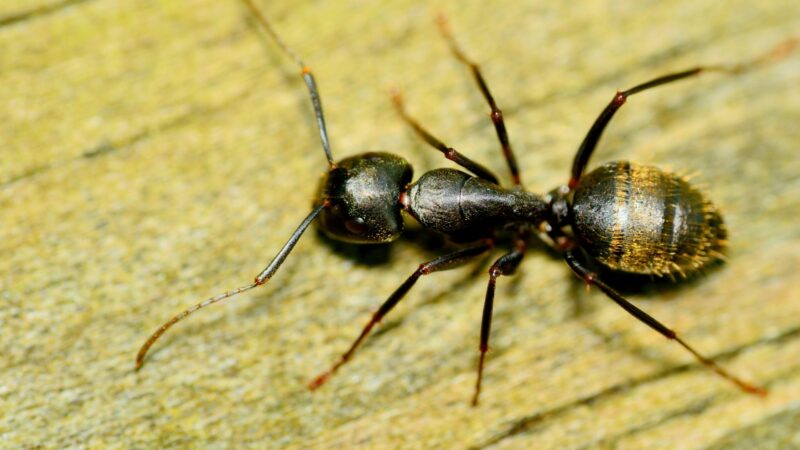
Did you know that there are more than 12.000 species of ant on our planet? Fortunately, only a few can become household pests, and it’s relatively easy to distinguish whether or not ants infesting your place are carpenter ants.
These particular ants are usually entirely (or mostly) black and relatively big. A carpenter ant has a single node at its waist (between the thorax and the abdomen). Many other ants have two nodes (pharaoh ants, little black ants, pavements ants).
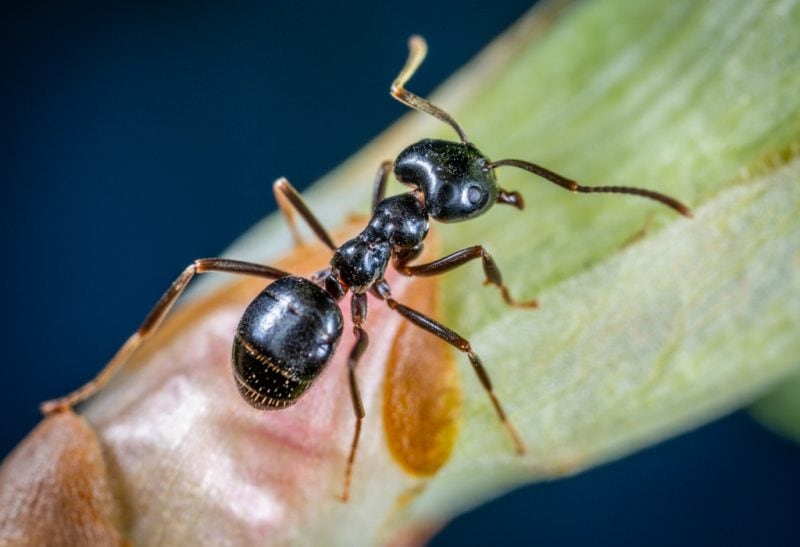
However, some ants also have a single node. To ensure that the pest in front of you is a carpenter ant, you must take a closer look at its thorax. Carpenter ants have a rounded thorax, while other species of ants have an unevenly shaped thorax.
Do Carpenter Ants Have Wings?
The truth is that practically all ant species will have wings at one point in their life. The insects with wings are called ‘swarmers.’ Those are female and male adults whose main job is to leave their home nest and establish a new one somewhere else.
These winged reproductives can often be spotted on windows, for example. A carpenter ant swarmer will be larger than a regular carpenter ant. After the winged reproductives mate, the male dies, and the female becomes the queen of the nest.
How Big Are Carpenter Ants?
How can you tell if the ant in front of you is a carpenter ant? Well, these annoying pests are one of the bigger ants. They can be 6-12 mm long (and that’s quite a lot for an ant!).
Related: How to Get Rid of Thatch Ants | Efficient, Safe, and Natural Solutions
What Do Carpenter Ants Eat?
If you know exactly what carpenter ants prefer to eat, you can choose the right bait and then use it to track the ants to their nest, for example.
Unlike termites, carpenter ants do not eat wood. They carve galleries and tunnels and then establish nests, but they don’t use the wood as food. These insects prefer their diet to include sources of sugar and protein.
If the carpenter ants live outdoors, they would be more than happy to eat other insects or honeydew secretions. Inside, these creatures are ready to eat sweet foods, meats, and even pet food.
During spring and summer, carpenter ants prefer to go out foraging for food between sunset and midnight. If you spot only a few ants running around during the daytime, that does not mean you don’t have an infestation. The chances are high that all the other carpenter ants are waiting for night to fall to leave their nest.
What Are the Main Differences Between a Carpenter Ant and a Termite?
Of course, you would want to know what insect you are dealing with, an ant or a termite. Fortunately, it is relatively easy to tell the difference. Even though most species of termite produce swarmers with a black body (just like carpenter ant swarmers), the flying ants are much bigger. A termite with wings will certainly fit onto the face of a dime, unlike the carpenter ant swarmer.
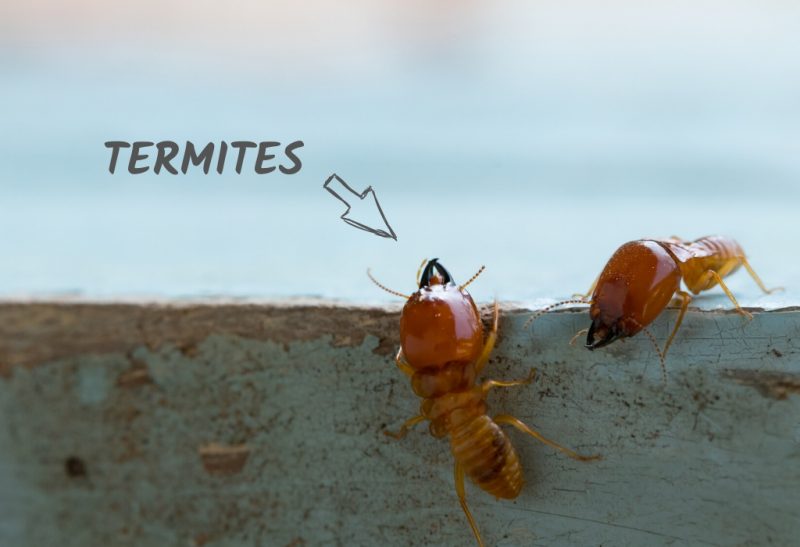
If you still find it challenging to understand what kind of insect is in front of you, look at the creature’s body. Termites, for example, don’t have a waist (unlike ants). The wings of a termite are white, while an ant’s wings are yellowish. Moreover, termite wings are stacked on top of each other.
If you get close to the insect, you can quickly look at the creature’s antennae. If they are straight or have a slight curve – you are looking at a termite. A carpenter ant will have an elbow in its antennae.
Threats of Carpenter Ants
Carpenter ants can be uncomfortable, but they don’t pose a serious threat to your health because they don’t transmit disease. Additionally, they don’t bite frequently and their bites aren’t deadly.
They can, nonetheless, offer a huge threat to the framework of your house. They make their nests by hollowing out wood, so if they get into your home’s wall gaps and remain there for a long period of time without being discovered, they could do irreparable harm.
Fortunately, carpenter ants operate more slowly and cause less damage overall than termites. They’re also simpler to see because they have to leave the nest to locate food. However, you must move quickly if you detect carpenter ant infestation symptoms.
Do Carpenter Ants Bite?
Unfortunately, carpenter ants can bite humans. And the worst part is that these bites can be pretty painful. These ants are relatively big and have strong wood-cutting mandibles. So, their bite can potentially break the skin.
However, carpenter ants do not just bite for the sake of it. Unlike bed bugs, for example, ants don’t need to suck the blood of a human. So, what can make a carpenter ant bite you?
These ants bite for their defense. If a carpenter ant feels that you are a threat or that you are disturbing or trying to destroy its nest, the chances are high that the creature will bite you.
Considering that our main aim is to destroy the ant’s nest, you might be bitten at one point or another, in case your house or territory is infested. If you get bitten by a carpenter ant, you will certainly feel it. There will be a severe pinching and burning sensation. The bite mark is equal to the size of a pea. The skin will look raised, and there might be a blemish.
Thankfully, the bite is not venomous. The venom contains some toxic elements, but the concentration is very small, so there won’t be any threat to your health.
The ant’s bite is so painful because of the presence of formic acid. If the human feels prolonged pain or develops an allergic reaction, he or she should take a trip to the doctor.
If a carpenter ant has bitten you, wash the bite with soap and water. Apply a cold compress for around 5-10 minutes. If you have not gotten any relief, try applying a special cream for bites. Once the wound is clean, make sure to bandage it to avoid any irritation.
How Do Carpenter Ants Get Into a Home?
Carpenter ants hardly ever dig into wood that is dry. However, nests indoors can be discovered in locations like door casings, sills, joists, wall studs, porch pillars, crawlspaces, and around sink. Additionally, soft materials are excavatable by carpenter ants.
Are Carpenter Ants Hard To Get Rid Of?
Carpenter ants can be eliminated in a variety of methods. The size of the colony and the depth to which they have burrowed into your property all determine how long it will take to completely exterminate them.
It is always worthwhile to seek out expert assistance if you are having trouble killing them on your own.
What Kills Carpenter Ants?
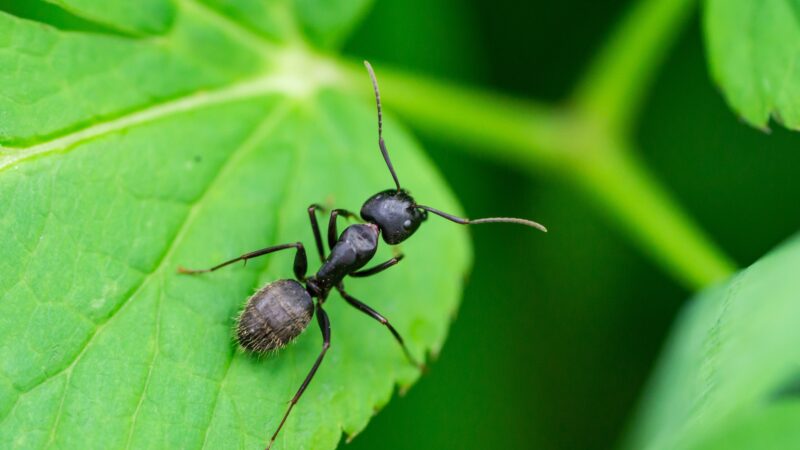
Carpenter ants can quickly infest wooden infrastructure within your house. At one point, it can stop being just annoying and become dangerous. These insects can develop multiple nests and cause a lot of damage to the wood.
The great news is that plenty of things can kill carpenter ants.
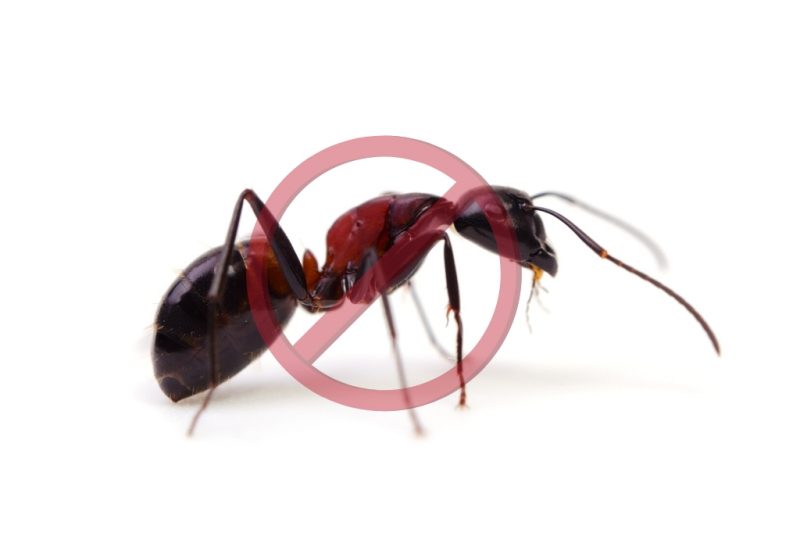
Carpenter Ant Bait
Carpenter ants are just like all the other ant species. The ‘working’ individuals are out foraging most of the time. Carpenter ant bait is created to target the insects along their trail (rather than in the actual nest). This is a great option in case you need to destroy an outdoor colony or if you can’t get close to the nest.
What will happen is that the ant will pick up the bait and then carry it back home into the nest. As a result, the whole colony will be poisoned.
There are a few essential things that you have to take into consideration when choosing the perfect carpenter ant bait. It should be explicitly designed for ants to ensure that no other insects ‘steal’ it.
Moreover, the bait should be resistant to various weather conditions so it doesn’t get destroyed. Don’t put the bait right next to any ant repellents. In such a case, the ants won’t be able to get close to the bait.
Carpenter Ant Insecticides
If carpenter ant baits are simply not doing the job, you can always try insecticides and pesticides. Such a treatment is great for stopping ants from getting inside your house from nearby foliage, debris, or trees.
A perimeter treatment will surely stop them from infesting your place. However, do your research and choose an effective carpenter ant insecticide.
Natural Alternatives
Natural alternatives can be the best solution if you try to avoid artificial chemicals, pesticides, and other poisons at any cost. Boric acid, for example, and diatomaceous earth. The first option will poison the ants, while the soft sedimentary rock will dry the carpenter ants out and shred their bodies.
How to Get Rid of Carpenter Ants – Step-by-Step Instructions
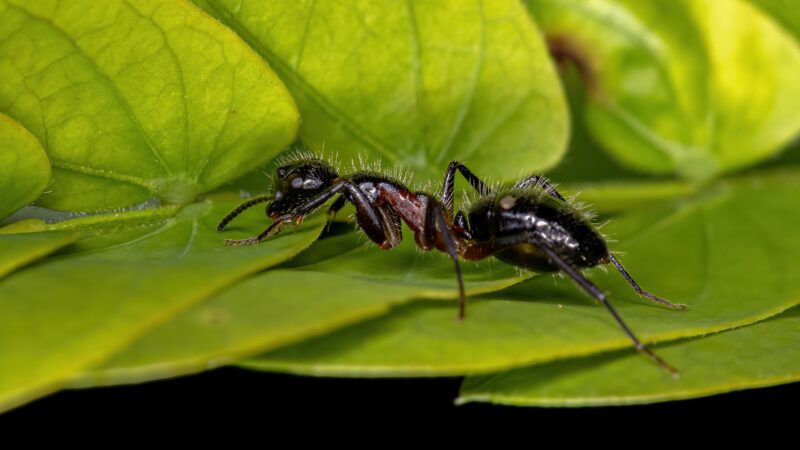
Are you sure that you are dealing with a carpenter ant infestation? If the answer is ‘yes, prepare yourself for a long and challenging battle.
Step 1 – Finding the Ant Nest
First things first, you have to find the nest. There are two types of ant nests – parent and satellite. Of course, the parent nest is the ants’ main home where the queen lives.
However, if you have a severe infestation, you might also find satellite nests that have emerged simply because there was no longer enough space for more in the parent nest.
Remember that if you spot a few carpenter ants running around, that does not necessarily mean that the nest is close. You can start by having a closer look at the places where there is constant moisture (the areas around venting entrances and plumbing, around the basement, and so on). Are there any branches hanging close to your house? This can be an entry point as well.
The best way to find the ants’ nest is by following the insects. Of course, this method will take some time. You can use a wide range of food as bait. Wait for the ant to pick it up and then carry the food back to its nest.
Step 2 – Destroy the Ant Nest
The next step is pretty much straightforward. You need to destroy the ant nest. There are two methods that you can use.
Method 1: Use the Carpenter Ant Bait
The workers would take the bait and carry it to the nest. As the thing is poisonous, it will kill the colony. Always remember that carpenter ant bait needs to be replaced every few days as it can simply spoil and not bring any results. Of course, children and animals should be kept away from this poisonous substance.
- Active ingredient: Fipronil..... 0.001%
- Target pests: ants including Acrobat, Argentine, Big-headed,...
- 27-Gram tube
- Yield: up to 1-gram per spot
Maxforce Carpenter Ant Bait Gel is a 27-gram tube with Fipronil being the active ingredient. The gel mimics honeydew – the preferred food of ants. Carpenter ant bait will help you kill the inaccessible colonies.
You might want to use a couple of different ant baits (try the one below) just in case the insects won’t like the first one.
- OPTIMAL CONTROL: Optigard Ant Gel Bait from Syngenta is a...
- EASY APPLICATION: This stainless, odorless ant bait is known for...
- TARGETS ALL MAJOR SPECIES: The sugar-based gel matrix of Optigard...
- EFFICIENT ANT CONTROL: Other baits can be too runny, which...
- COMPACT PACKAGING: Optigard Ant Gel Bait is packaged in...
Method 2: Direct Attack and Insecticide
You can always attack the actual nest, in case you manage to find it. The chances are high that you would need to drill some holes in the wall, but your house would need repair procedures after the ant invasion. Once you have found the nest, you can use a special product to spray it all over it.
Ortho Home Defense Max, for example, contains Bifenthrin. You can use the wand to spray the chemical over the nest (moreover, the thing is non-staining and odor-free).
- STARTS KILLING LISTED INSECTS FAST: Ortho Home Defense Max Ant,...
- NO-FUME SPRAY: Formulated to kill indoor insects, including ants,...
- LONG LASTING SPRAY: Long lasting spray starts to kill existing...
- ANGLED SPRAY: The sprayer works at any angle--even upside...
- USE INDOORS: Kill insects anywhere in your home, including...
When you are choosing a spray against carpenter ants, make sure to check the main ingredients. The insecticide should contain Bifenthrin, Deltamethrin, or Permethrin.
Step 3 – Get Rid of the Ant Pheromone Trails
Finally, you have to erase carpenter ant trails. These insects leave scented trails that other ants follow. So, if you see one single and running around, the chances are high that soon you will spot more insects. That’s why it is important to get rid of this invisible trail.
You can always mix 1 part of vinegar with 3 parts of water and pour the mixture into a spray bottle. Spray the potion wherever you have seen the ants.
Bear in mind that this mixture will not kill the ants. You will still need to use carpenter ant bait or special sprays to get rid of them.
How to Find Carpenter Ant Nest – Tips & Guide
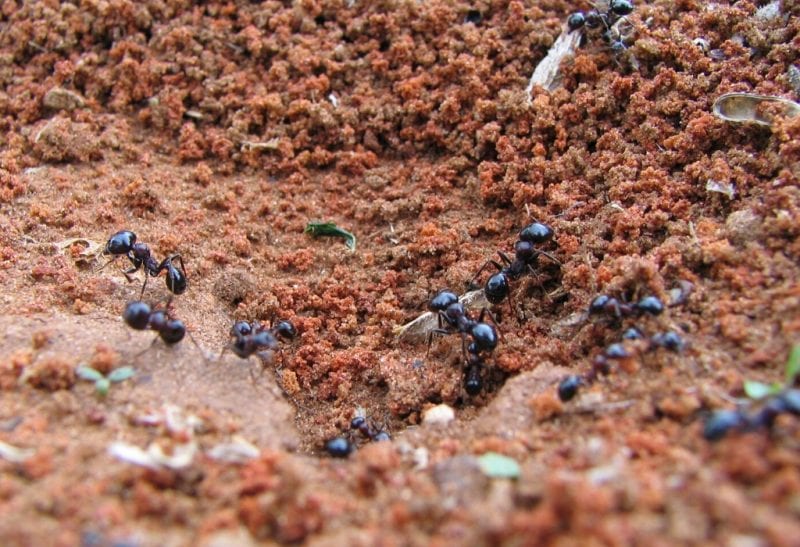
Finding the actual nest is an extremely important step to getting rid of the whole colony of carpenter ants that have infested your house or yard.
Knowing how ants’ activity varies depending on the season is helpful. For example, you might not notice an infestation during winter months, even if you have one. There is not enough heat and light for the colony to thrive, so these insects might remain dormant until spring.
A lot of ants are produced in late summer. The swarmers (winged reproductives) can be spotted during late winter and early spring. Once again, if you see any swarmers inside your house during this period, you can be sure that you have a nest inside the house.
Ant colonies prefer moist areas. This fact should help you locate the actual nest. However, remember that there are two types of nests – parent and satellite colonies. Parent colonies include the queen, worker ants, and her brood.
Outside, the nests can be found in rotting trees, tree stumps, and roots, boards and logs, and so on. Unfortunately, the nests can also be located inside the house. Ants would, in most cases, prefer the areas under and around kitchen and bathroom tiles, showers, dishwashers, sinks, and tubs.
Parent colonies need to find a moist area to thrive. However, satellite colonies can be found in drier places (hollow doors, wall voids, insulation, etc.).
Carpenter ant nests might be challenging to find. That’s why some experts recommend tapping into wood surfaces. Listen for a hollow sound – an indication of damaged wood.
Moreover, tapping can stress the ants out, and they will end up leaving their nest. In such a case, you would certainly see the carpenter ants running around (which means the nest is somewhere in this area).
Last but not least, you can follow the ant trail. Find the insects that are already carrying food as they are returning to their home. Of course, you might need to spend some time if you choose this method, but you will certainly end up finding the nest.
How to Prevent Carpenter Ants from Coming Back?
Getting rid of carpenter ants is just half of the job. You also want to ensure these annoying insects do not return. Thankfully, there are a few things that you can do about that (bear in mind that this will take quite some time and effort).
- We know carpenter ants love to live in moist (water) areas. So, the first thing you can do to prevent ant infestation in the future is correct any moisture problems (get rid of roof and plumbing leaks, for example). The leaks should be dried up inside and outside the house. And don’t forget to replace any water-damaged wood.
- Branches and tree limbs can serve as a ‘bridge’ to your house. If you have any trees growing close to the building, remove them.
- You will have to spend quite some time sealing all gaps and cracks on the home’s exterior (pay extra attention to the pipe and other wall penetrations).
- Any wood debris or firewood piles should be located away from the house (or at least ensure they do not touch the garage or house wall). If you have such a possibility, elevate the firewood off the ground.
- Insulate your windows and doors.
- Remove any clutter from your house and the surrounding territory so the insects do not find shelter there.
List of Sources
Carpenter Ants (Identification, Biology, and Control), Harvard University, University Operations Services
Controlling Termites and Carpenter Ants, University of Massachusetts
Lewis D., Carpenter Ants in the Winter, Iowa State University
Pellitteri P.J., Controlling Carpenter Ants, University of Wisconsin
Biology and Management of Carpenter Ants, University of Georgia
Carpenter Ants, Department of Agriculture, Conservation and Forestry Maine
- How to Get Rid of Copperheads | Practical Guide - August 27, 2023
- How to Get Rid of Corn Snakes | What Makes Them Aggressive? - August 27, 2023
- How to Get Rid of Alligators | Safety Measures and Removal Methods - July 16, 2023



